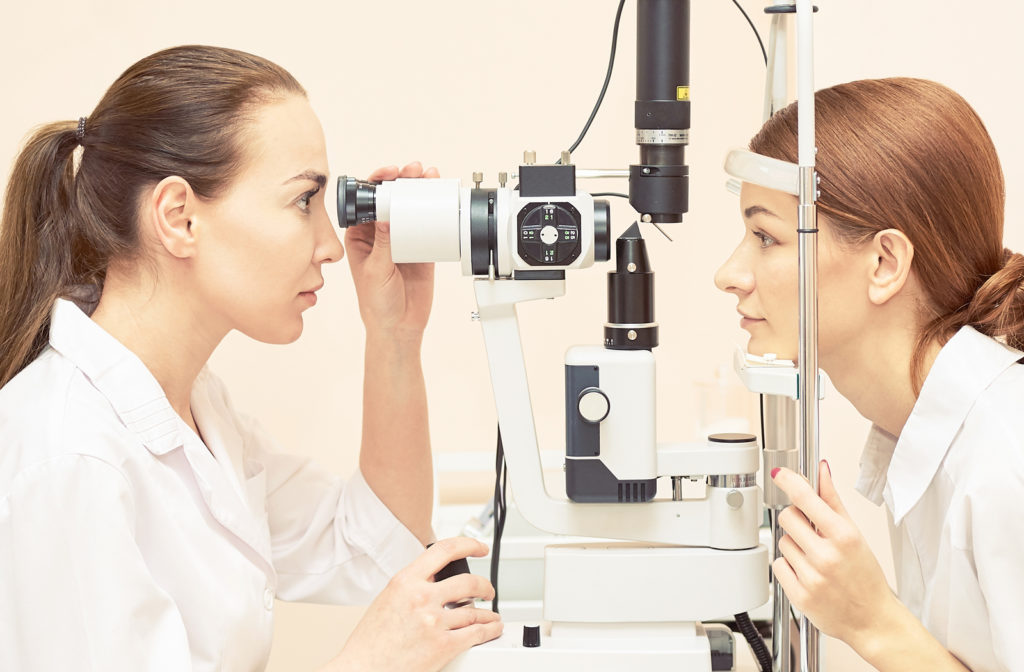Trustworthy Opticore Optometry: Raising Your Eye Health Experience
Trustworthy Opticore Optometry: Raising Your Eye Health Experience
Blog Article
The Comprehensive Eye Exam: What to Anticipate During Your Visit to the Eye Doctor
A visit to the eye doctor for a detailed eye examination is greater than a regular check-up; it is a critical step in protecting your visual health. From the preliminary discussion of your case history to the precision of the visual skill test, each part of the test serves a details objective. What specifically takes place during the eye wellness analysis, and exactly how does it influence the prescription process? Comprehending these aspects is necessary for those who desire to keep ideal vision. As we discover each element, the importance of follow-up recommendations will also become clear.
First Examination
The first appointment during an eye test functions as an essential foundation for comprehending a client's visual wellness requirements. This stage establishes the tone for the entire evaluation process, allowing the optometrist to collect crucial info concerning the client's case history, lifestyle, and details vision concerns. By meticulously assessing any pre-existing problems, drugs, or previous surgical treatments, the eye care expert can customize the assessment to attend to individual needs effectively.

Additionally, the preliminary assessment is a possibility for individuals to articulate any kind of concerns or problems, fostering a collaborative connection with their healthcare copyright. This communication not just makes certain that the person feels informed and comfortable but also encourages them to take part proactively in their eye health and wellness administration. Jointly, these conversations make it possible for the optometrist to devise a personalized examination strategy, guaranteeing optimal care and accurate medical diagnosis.
Aesthetic Skill Examination
Starting the core elements of an eye examination, the aesthetic acuity examination is made to examine the intensity and clarity of a client's vision. This critical examination assists identify how well a person can recognize letters or signs at a standard range, generally using a Snellen chart (Eye Doctor). The chart comprises rows of letters that lower in size inside out, with the client positioned at a popular distance of 20 feet
During the test, the person is asked to cover one eye and check out aloud the smallest line of letters they can see clearly. This procedure is repeated for the various other eye. The outcomes are recorded as a portion, with 20/20 vision suggesting typical visual acuity-- where the person can see at 20 feet what an individual with typical vision can see at that range.
The visual skill examination additionally determines potential refractive mistakes such as nearsightedness, astigmatism, or hyperopia, which may demand restorative lenses. By developing a standard of visual efficiency, the examination is a vital analysis tool that assists the eye treatment specialist in establishing an appropriate therapy strategy customized to the patient's distinct aesthetic needs.
Eye Wellness Analysis
Following the aesthetic acuity examination, a comprehensive eye wellness evaluation is performed to ensure the general health of the eyes. This critical section of the eye exam entails a comprehensive assessment of both the external and inner structures of the eye.
Next, attention changes to the inner structures. With making use of ophthalmoscopy or fundus photography, the retina, optic nerve, and blood vessels are diligently reviewed. This step is vital for determining problems such as retinal detachment, glaucoma, or diabetic retinopathy. Oftentimes, student expansion is done to boost exposure of the interior eye structures, although this may result in short-term light sensitivity for the client.
Furthermore, intraocular pressure is gauged to evaluate for glaucoma risk. This is usually done utilizing tonometry, which can identify raised stress degrees that may recommend prospective damages to the optic nerve. Jointly, these assessments form a thorough evaluation to maintain eye wellness.
Refraction and Prescription
Refraction is a sophisticated procedure performed by eye care professionals to establish the exact lens power needed to correct refractive mistakes such as myopia, astigmatism, presbyopia, and hyperopia. The goal of this treatment is to examine how light bends as it my link passes via the eye, enabling the practitioner to establish whether restorative lenses are necessary for enhanced visual skill.
During the refraction procedure, the patient is asked to browse a phoropter, a device which contains different lenses. The practitioner will methodically change these lenses and ask the individual to contrast clarity in between alternatives until the most effective possible vision is attained. This treatment is important in crafting a precise prescription that defines the ideal lens power for eyeglasses or call lenses.
The prescription originated from this treatment not only enhances vision yet also serves as a structure for selecting appropriate rehabilitative eyewear. It is necessary to ensure that prescriptions are consistently updated, as modifications in vision can take place over time, emphasizing the value of regular eye examinations. This precise interest to information aids maintain clear, comfortable vision in day-to-day live.
Follow-Up Suggestions

Throughout a follow-up see, the eye physician will perform a collection of Check Out Your URL examinations to review visual skill and check for any type of modifications in vision that could demand an upgrade to the prescription. In addition, the follow-up supplies a possibility to talk about any pain or issues experienced with existing glasses. Modifications can be made to ensure convenience and efficiency, whether through lens adjustment or structure changes.
For people with continuous conditions such as glaucoma, diabetes-related eye problems, or macular degeneration, more constant follow-ups may be necessary. These consultations are vital for taking care of and possibly slowing down the development of eye disease. Abiding by these referrals can dramatically contribute to preserving aesthetic health and avoiding long-lasting difficulties.
Verdict
The extensive eye exam is a necessary procedure for maintaining visual health and wellness, encompassing a comprehensive analysis of clinical background and vision problems. Trick parts consist of the visual acuity examination, which evaluates sight clearness, and the eye health assessment, which takes a look at the total problem of the eyes.
A browse through to the eye doctor for a comprehensive eye exam is more than a regular examination; it is an important action in guarding your aesthetic health and wellness.Kicking off the core components of an eye assessment, the visual acuity examination is created to analyze the intensity and clarity of a client's vision.Following the aesthetic acuity test, a comprehensive eye health and wellness assessment is conducted to ensure the overall wellness of the eyes. These visits allow the eye treatment specialist to keep track of Visit Your URL adjustments in vision, upgrade prescriptions, and assess the general wellness of the eyes. Key elements include the aesthetic skill test, which assesses sight clarity, and the eye wellness assessment, which examines the total condition of the eyes.
Report this page